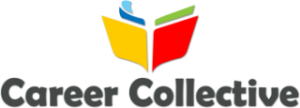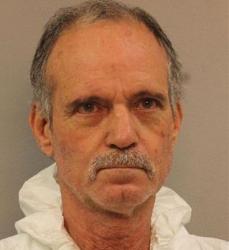Today in the U.S., a child’s zip code often determines the quality of education he or she receives. For poor children and children of color, the far-reaching effects of this disparity include diminished prospects for meaningful employment and a greater likelihood of poverty, unemployment and incarceration. In our connected world, the disadvantages of living in the wrong zip code affect our entire nation and have already compromised America’s global competitiveness. Driving meaningful change and long-term success for our next generation, specifically for at-risk and underserved children, begins with improving the quality of education across all of our nation’s communities.
Or do we continue down the current path, a path that some observers proclaim is most consistent with our true history? There are those who propose the underserved will always be limited to catering to those who were allowed better opportunities and a quality education—an idea that hearkens back to America’s dark past of slavery.
While slavery and segregation are overt expressions of deep hatred, is the denial of a quality education to those that reside in certain zip codes anything less hateful? Certainly, the outcome for the subjects of either are despicable. While many prefer not to discuss or acknowledge the purposeful will that is responsible for creating and sustaining our current version of separate and unequal public education, the evidence is overwhelming and for some compelling.
As Frederick Douglass clearly articulated during the 76th celebration of our nation’s birth:
“I will not enlarge further on your national inconsistencies. The existence of slavery in this country brands your republicanism as a sham, your humanity as a base pretense, and your Christianity as a lie. It destroys your moral power abroad: it corrupts your politicians at home. It saps the foundation of religion; it makes your name a hissing and a bye-word to a mocking earth. It is the antagonistic force in your government, the only thing that seriously disturbs and endangers your Union. It fetters your progress; it is the enemy of improvement, the deadly foe of education; it fosters pride; it breeds insolence; it promotes vice; it shelters crime; it is a curse to the earth that supports it; and yet you cling to it as if it were the sheet anchor of all your hopes. Oh! be warned! be warned! a horrible reptile is coiled up in your nation’s bosom; the venomous creature is nursing at the tender breast of your youthful republic; for the love of God, tear away, and fling from you the hideous monster, and let the weight of twenty millions crush and destroy it forever!”
It may be reasonable to replace the word “slavery” above with “inferior public school education within urban and impoverished communities,” for the impact and results are fundamentally similar. Many might assert that providing all children with access to a quality education should not be reduced to the voting results of local school board budget approvals. While community citizens certainly are entitled to a say in such matters of education for their youth, they should be focused only on the extra cost associated with selective options that go beyond what is required to deliver the quality education that every American child deserves. The Finland model provides clear evidence that enabling a quality education independent of location actually and significantly enhances outcomes for the specific individuals, the surrounding community and the nation. Allowing the venomous creature, not of enslavement but of the acceptance of poor education, to exist for the underserved is nothing less than a crime against humanity.
The Mount Vernon Technology & Science Youth Center for Advancement – soon to be renamed the Northeast STEM Starter Academy at Mount Vernon (NSSA) – seeks to close the gap between where students are and where they need to be. NSSA’s intervention focuses on providing these at-risk youngsters the science, technology, engineering and mathematics exposure and skills that can enable them to break the cycle of poverty. More than 93 percent of Mount Vernon’s public school children are of color with more
than 40 percent living at or below the poverty line. For these students, last summer’s STEM Camp and the other programs NSSA has delivered over the last year represent the beginnings of an era of engagement, transformation and progress toward better lives. Quality education for all is at the core of meaningful change that endures beyond a few election cycles.
When 29 seventh graders donned safety goggles and rolled up their sleeves for two weeks of in-depth STEM learning last summer, they were eager to take on the challenge of the unknown. The students built robots, learned physics, explored genomics and received prep instruction for eighth grade math and science. Their instructors from Columbia University, Stoney Brook University and Lehman College – and guest mentors from Regeneron and IBM – remarked how bright, engaged and excited the students were. High performance marks were consistent across the class as was a clear sense that the students could be scientists, engineers and more.
In NSSA’s recent Girls InnovateIT coding and entrepreneurship course (a free, six-Saturday program), 25 girls gained exposure to computer coding through ALICE while learning leadership and entrepreneurship. By the end of the six weeks of classes, each student produced a two-minute animated computer program based on a concept she created. Girls InnovateIT was sponsored in large part by MasterCard and included mentoring and insight from more than 10 Regeneron scientists and professionals along with a medical doctor and other professionals within the STEM field.
For the most endangered segment of the minority population, young men of color 14 to 17 years old, NSSA’s five-Saturday program was considered exceptional in every regard. Pace University Professor Ardito and several assistants introduced 25 young men of color to coding. Professor Ardito remarked how his experience with these young men was exciting and exceeded all expectations while destroying any myths imposed on minorities specific to learning. Again, exposure, not race or status, proved to be what really makes the biggest difference. The same sentiments were echoed by the five successful minority men mentors – including two doctors, two lawyers and the former governor of New York. These luminaries made room in their schedules to spend 90 minutes sharing their life experiences, including how they navigate the race-based challenges almost every minority male encounters in America.
But when I entered this program it was like being opened to an entirely new world. Science and math actually started to become real fun for me. I think it is amazing because I’ve always been good at math and science but both subjects have always bored me. Now knowing that I can use my skills that seemed useful only for a path to something boring to instead do something that I actually consider interesting is the greatest thing this program gave to me. More programs like this one should be around for young men of different colors. Programs like this one show men like me that there is a future for us. When you are raised in a place where you see nothing but your own kind doing nothing but evil, it sometimes steers you into the same path. But with programs like this, it give young men of color who see no hope or future for themselves a chance to break that very same stigma. Throughout the Science of Success program I have learned many needed values that we all to have to push through this world.
Aryel, 10th Grader, Mount Vernon’s Nelson Mandela High School
The ultimate goal for NSSA is to create the infrastructure where change consistent with the scale of the problem can take place. Meanwhile, this summer NSSA will deliver three summer camp programs to fifth graders, a new class of seventh graders and the returning class of seventh graders, now eighth graders, from last summer. The eighth graders will continue to build the robots they started last summer and learn more about genomics, science and math. Consistent with one of the center’s core objectives, students will build lasting relationships with the center and their mentors. Students from all of classes will be invited to attend
at least one new NSSA class annually and work with mentors until they graduate from high school prepared to enter college in pursuit of a STEM career.
Here’s a snapshot of three upcoming NSSA programs designed to engage at-risk youth and inspire them to become scientists, teachers, engineers and other STEM professionals.
STEM II Cohort 1
STEM II is a follow-up to STEM I. The 29 students who participated in the STEM I (Cohort I) will extend their capacities in designing, constructing and programming robots. Additionally students will explore algebraic concepts (Relationships Between Quantities and Reasoning with Equations and Their Graphs) and biochemistry (Process of Living Organisms, Feedback and Homeostasis & Enzymes). The STEM II program’s curriculum, instruction and assessments will be tightly interwoven to support student learning via problem solving, research, critical thinking and communication skills.
Students who participated in the STEM I (Cohort I).
August 10 to 21, 2015
TBD
STEM I Cohort 4
STEM I will be a two-week intensive academic program to increase students’ knowledge and interest in STEM as a potential career path. Twenty-five seventh grade students will explore genomics and robotics along with a constructivist approach to mathematics (Linear Equations) and physical science (Properties of Matter & Energy Transformations). The STEM I program’s curriculum, instruction and assessments will be tightly interwoven to support student learning via problem solving, research, critical thinking and communication skills.
7th Grade Students
August 10 to 21, 2015
8:30 am – 3:00 pm
TBD STEM III Cohort 5
STEM III will be a one-week intensive academic program to increase students’ knowledge and interest in STEM as a potential career path. Twenty-five fifth grade students will explore engineering through rocket-building along with science and math study. The STEM III program’s curriculum, instruction and assessments will be tightly interwoven to support student learning via problem solving, research, critical thinking and communication skills.
5th Grade Students
August 10 to 14, 2015
9:00 am – 3:00 pm
TBD
From an ROI perspective, the center will have the capacity to change the lives of many young people. NSSA’s relationship with the school board and school leadership will support plans for all 9,000 Mount Vernon public school children to visit the 140,000-square-foot facility at least twice a year for a three-hour guided learning tour. All students will have the opportunity to participate in free after-school classes, weekend and summer programs, tutoring and mentoring. AP courses and college courses for high school students will also be available, as well as programs for educators and parents. With the necessary infrastructure, it is reasonable to expect a sustainable impact on the lives of at least 3,000 to 5,000 students each year. Few if any existing programs in Westchester County or even in New York State have the capacity to drive change on a comparative basis.
The center will also serve to support a cultural shift within a city in need of change through the creation of at least 80 to 100 new jobs on opening day. The jobs will include at least a dozen positions at the doctorate level, more than two dozen college graduate positions and dozens of other employment opportunities that enable meaningful careers.
From the human perspective, we might consider Invictus, the artful expressions of an individual from an impoverished upbringing, drawn from the pain of experiencing a limb amputated and on the verge of having the other also removed:

Invictus
Out of the night that covers me, Black as the pit from pole to pole, I thank whatever gods may be For my unconquerable soul.
In the fell clutch of circumstance I have not winced nor cried aloud. Under the bludgeonings of chance My head is bloody, but unbowed.
Beyond this place of wrath and tears Looms but the Horror of the shade, And yet the menace of the years Finds, and shall find me, unafraid.
It matters not how strait the gate, How charged with punishments the scroll, I am the master of my fate: I am the captain of my soul.
William Ernest Henley, 1875
“Unconquered” is the message for each student who attends NSSA programs. They too must learn about overcoming obstacles, including the often unobtrusive and well-crafted imposition of low expectations from those in places of influence where the message should be about encouragement. By the end of each class, the words are committed to memory with the group’s recital captured on video and used to embolden others. But the real goal is that the meaning of the words will help students accept responsibility for the choices that will influence their lives.
“I find that Invictus is a way to express my inner ambition that is quite similar to that of someone else’s but at the same time unique. The confidence the poem emits has become a foundation for me, who has grown since attending the Girls InnovateIT camp.
Because I am not a born genius, this poem voices out the struggles I must go through to be the scholarship student I want to be. I was faced with the wrath and tears when I presented a first draft to my teacher or sisters. That criticism helped me deeply. Even when I felt down about not being exempt from criticism, coming out of that phase has made me an unconquerable soul.”
Mei Xiu “Amy,” 10th Grader, Mount Vernon High School
The mission of NSSA is to change the lives of at-risk youth through science, technology, engineering and math exposure and engagement that supplements their public education. This mission will only be possible with the help of others. Change that the center will drive begins with Mount Vernon’s children as a primary focus, but the center will be open to the public and all children throughout the Northeast. With the support of some of the millions of Americans who understand the challenge and who care to make a difference, this problem can be solved. To make these programs happen in a time of diminished resources, NSSA is seeking
to extend and expand beyond the partnerships with the school district, the community, industry leaders and the Northeast and the nation.
“Above all we need, particularly as children, the reassuring presence of a visible community, an intimate group that enfolds us with understanding and love, and that becomes an object of our spontaneous loyalty, as a criterion and point of reference for the rest of the human race.” —Lewis Mumford
Gerald Dennis is the founder of the Northeast STEM Starter Academy at Mt. Vernon- www.mvtsc.org. A 501(c)(3) non- profit organization, the Northeast STEM Starter Academy will be a 140,000-square-foot sanctuary of learning and development for 9,000 at-risk and underserved youth attending public schools in Mount Vernon and all children throughout the northeast.
- Website– www.mvtsc.org
- Tweeter– @coloredkds4stem
- Facebook– https://www.facebook.com/pages/Mount-Vernon-Technology-Science-Youth-Center- for-Advancement/420389368103378





